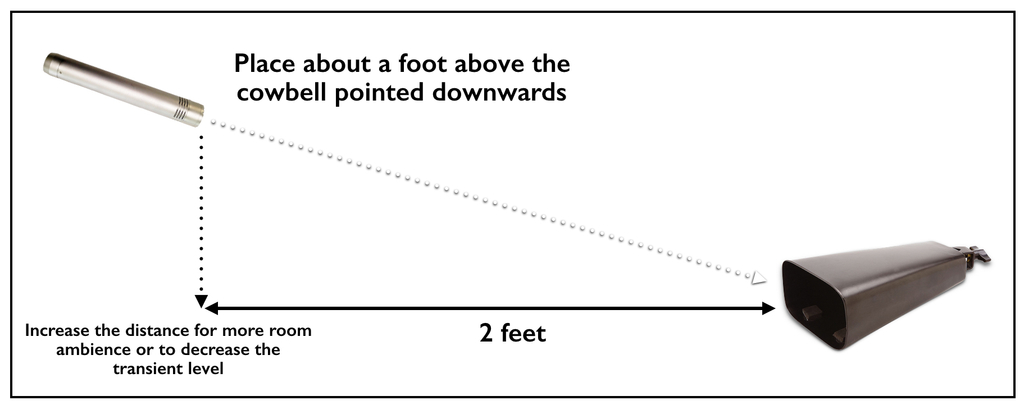- in Production , Recording by Bobby Owsinski
Two Excellent Techniques To Mike A Cowbell

It’s a cliche now that a song “needs more cowbell,” but there’s nothing better if that sound works in a mix. It’s pretty easy to just use a sample where needed and be done with it, but if you’re a purest and really want to record one, here are two good ways do it.
Some Things To Consider First
If you guessed that a cowbell actually had its origins as a way for a herdsman to identify his freely roaming animals, you’d be right. Its musical use can’t be denied though, because it’s a widely used percussion element frequently used in many genres of music, but a mainstay in salsa music where it provides the backbeat of a song.
Before you record a cowbell, here are a few things to consider:
- Cowbells project a high-frequency transient from the closed end as well as a fundamental frequency from the open end.
- The high end of the cowbell easily cuts through the mix, but the low frequencies sometimes get lost.
- Cowbell players holding the instrument sometimes move around when they play, so be sure that the mic is far enough away so they won’t move off-mic.
Placement Techniques
Technique #1: Place a mic about 2 feet in front of the cowbell but about a foot above it and angled downward (see Figure below).

Technique #2: This is basically the same as above except that you place a mic about 12 to 18 inches away, below the mouth of the bell and angled upward.
Microphone Choices
Remember that cowbells have a lot of transient energy so be sure to choose a mic that can handle the level. Although a condenser mic is certainly fast enough to capture this, sometimes a dynamic mic can soften the transient a bit, which might help it fit in the track better. A ribbon mic in this situation can be the best of both worlds.
If using a multi-pattern condenser microphone, be sure to try it in omni as well as cardioid, since sometimes that can pick up a some of the room tone, which helps it sound a bit more real than a typical sample.
You can read more from The Recording Engineer’s Handbook and my other books on the excerpt section of bobbyowsinski.com.

